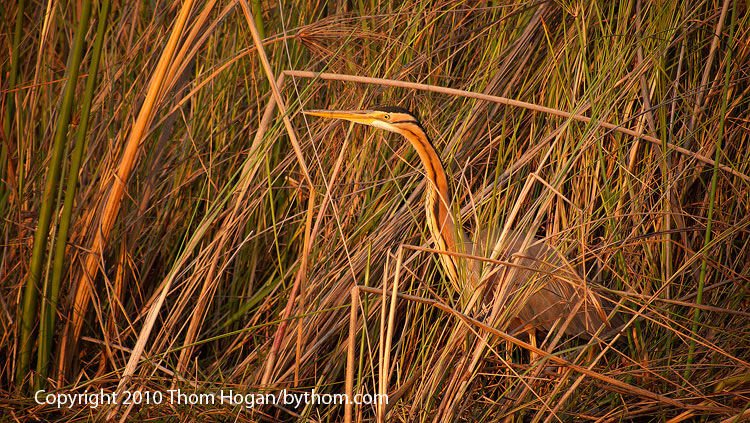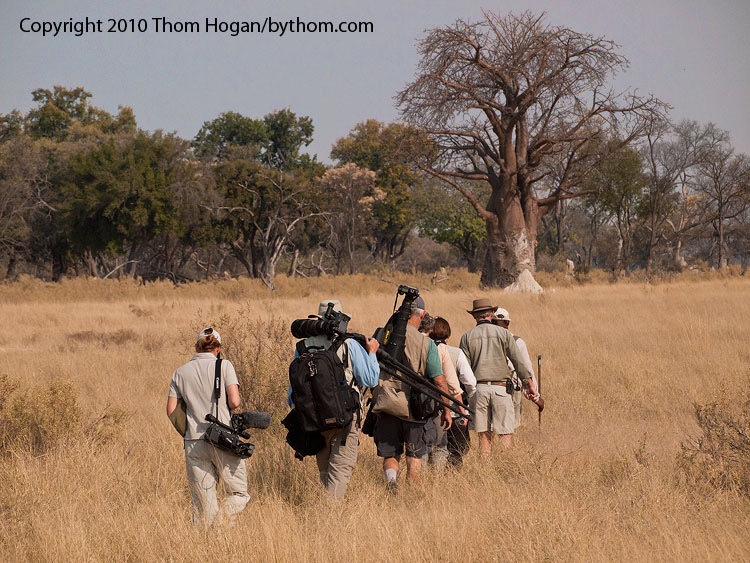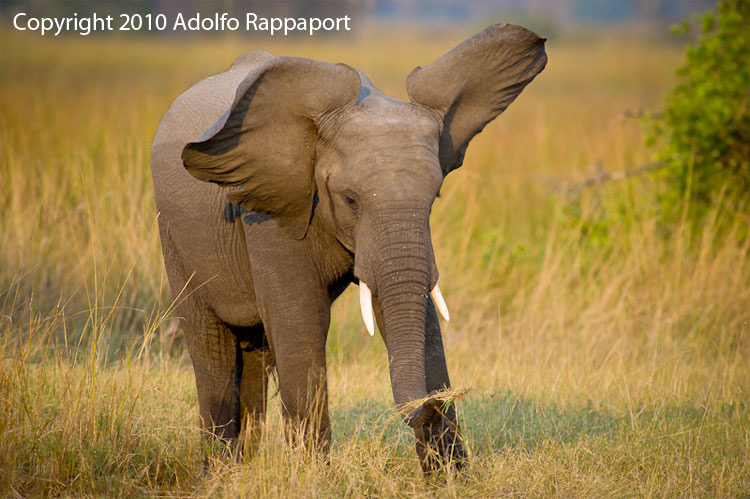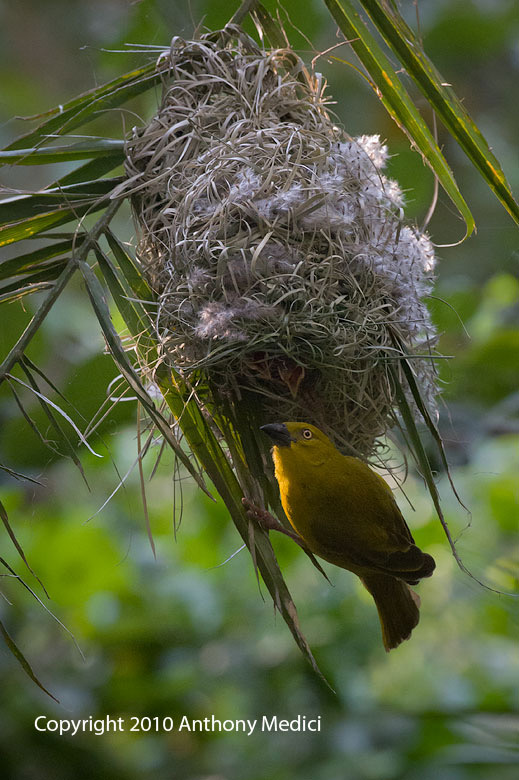Sept 9—After every long transport day, even one as enjoyable as yesterday, I try to make sure that we have a slow day that follows. Being constantly on the move--the most we spend at any place on this trip is three nights--means that if you don't have a simpler, slower day every now and then your gear ends up in a random state of chaos and your get more and more anxious along the way. Neither makes for great photos. So today we're getting up a little later, starting slower, and doing things at a more relaxed pace.
Once we had consumed breakfast our destination was Lopis (LOW-pez) island. This meant another boat ride through the reeds where we found a beautiful purple heron to photograph. We got almost the whole heron experience: standing there appearing to do nothing (but actually fishing), a bit of grooming, a successful fish grab, and eventually the heron moved off of the spot further into the reeds. We were hoping for a heron take-off, but the bird wasn't stressed with our presence and pretty much just ignored us as we tried to keep the boats positioned in the current. Like a lot of things in Africa, the heron is well camoulflaged for its environment:

You might be surprised to find that there is a current in a system that essentially doesn't outlet into anything. There is. It's gentle but constant. As the water piles down from Angola and ends up in the Okavango it gets pushed through the mostly flat sands of Botswana. On wet years like this one, the push is relentless and water reaches all the way into the Savute Channel and to places like Maun. In dry years—which Botswana had a 40+ year string of until last year, the water doesn't push very far down the delta and the Savute Channel is dry. Still, the water runs until it evaporates, so there is a current.
After dozens upon dozens of bends in the channel we reached our destination. On Lopis Island we went on our first walking safari. We saw plenty of animals, though with a big group like ours they tended to walk away from us pretty quickly. Still, seeing gazelles, wildebeest, baboons, bushbuck, and more from ground level changes one's perspective on safari. From the vehicles, especially looking down on things from the roof, one doesn't feel very vulnerable. Walking through the bush like the animals does. That was made even more obvious when as we came back to the boats we passed a pile of wood knocked down by elephants and we saw a mamba slither off into the pile. Mamba is one of the things we don't want to see on the trip if we can avoid it, but there it was, fortunately scared off by the large group of walkers. This is one of the reasons why we stay together in our walks, actually. There's a small degree of extra safety in numbers, and there's absolute danger if someone walks off on their own. (For the record, Adam had his gun with him.)

The afternoon was a walk on another adjacent island, and this one proved more fruitful (a smaller group went, as about half elected to hang around camp and catch up on chores or try their hand at bird photography (the grounds here are like an uncaged bird exhibit at the zoo: you're likely to see any and everything). A monitor lizard ran by the group giving every one their first good reptile shots. Moreover, they managed to find some elephant on their walk and got to see them from a closer and different view, too.

I used some of the down time between walks to do more image reviews. There's already been some very good shots taken, but all of us are still struggling from time to time with getting unwanted things out of our pictures. The grass and bush here is dense and nearly ubiquitous. Unwanted stumps or termite mounds seem to pop up in the background more often than anyone would like. Groups of animals get a lot of overlap amongst them, which is difficult to deal with. The big thing everyone is learning very rapidly on this trip is that you need to be constantly on the lookout for things popping up in your photo that you really don't want. It's easy to get distracted by the fantastic leopard laying in front of you, but you can't get too myopic or Africa will throw things into your shot you don't want. You can only do something about it if you see it. So getting everyone to see all that clutter is one of my jobs during image review. (What do you do about it? Move the vehicle is one thing you can do. Even moving a few inches one way or the other sometimes gives you clear shots.)
Meanwhile, Tony and Vince decided to spend the day at the bar. Well, not quite at the bar, but just in front of the bar. That's because there was a lot of bird activity in front of the lodge, including a weaver's nest (look for the two mouths open just above the mom's head):

All in all, today was a day about slowing down to the pace of Africa. We weren't in a hurry for anything. We didn't wander far. Some didn't wander at all. We walked slowly and deliberately in the bush. The interesting thing is that when you do slow down and get to the pulse of Africa, good things start to happen. You see little things you didn't see before. You're even more aware of the sounds and smells. You see the tracks and the scat and other evidence of the animals' presence. Hitting the pace of Africa is when you start making better photographic decisions.
